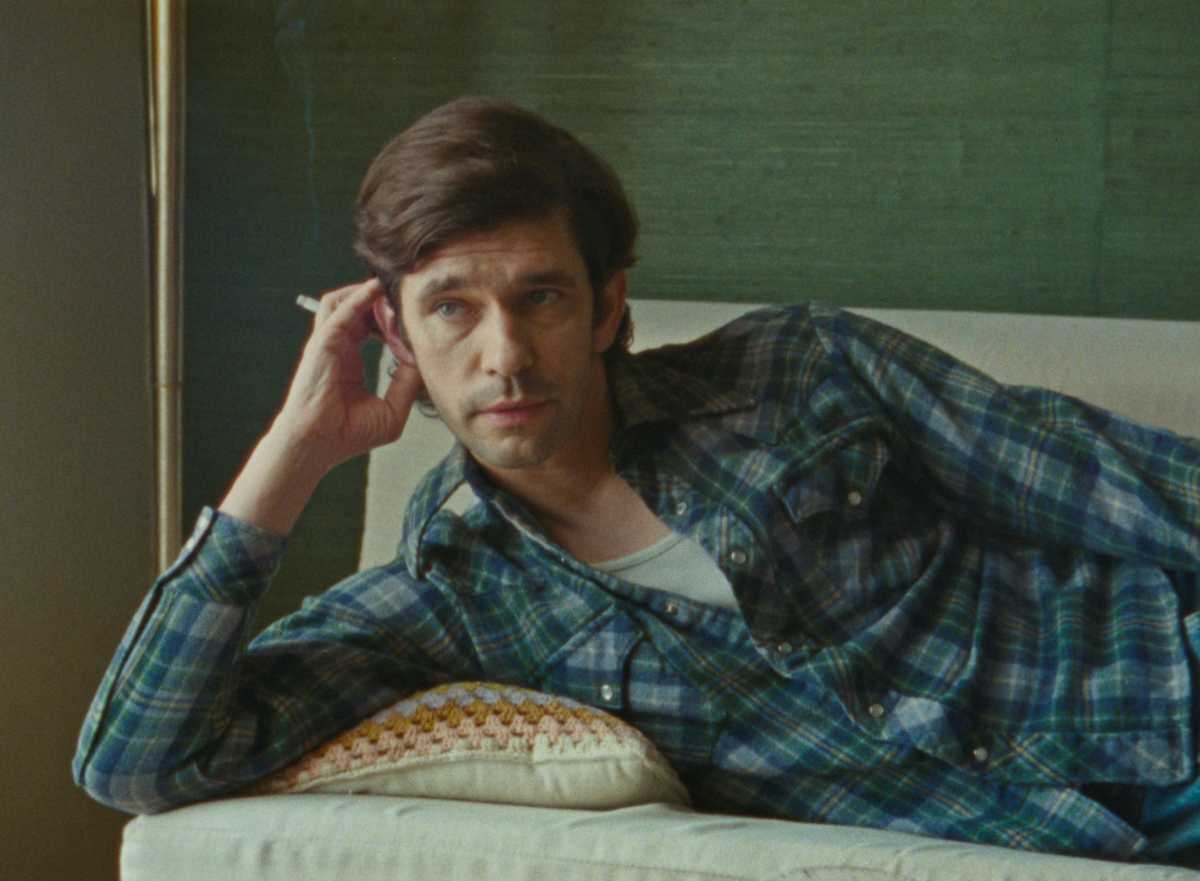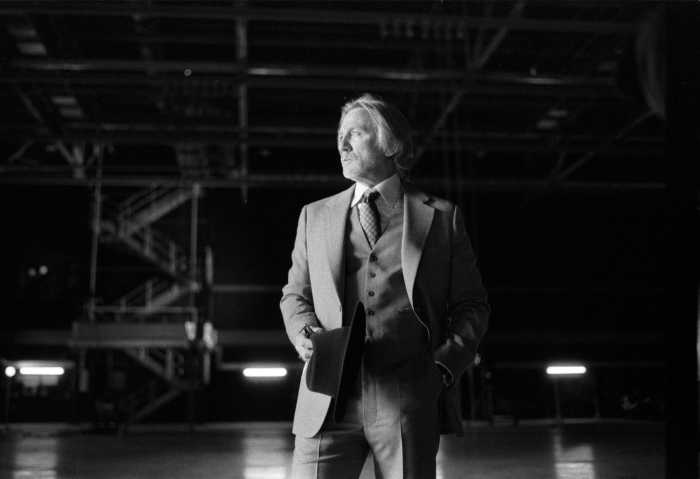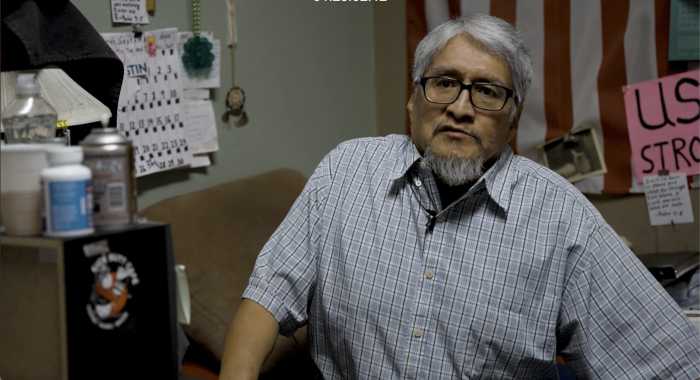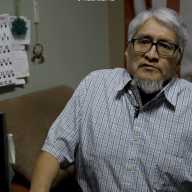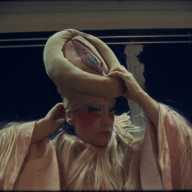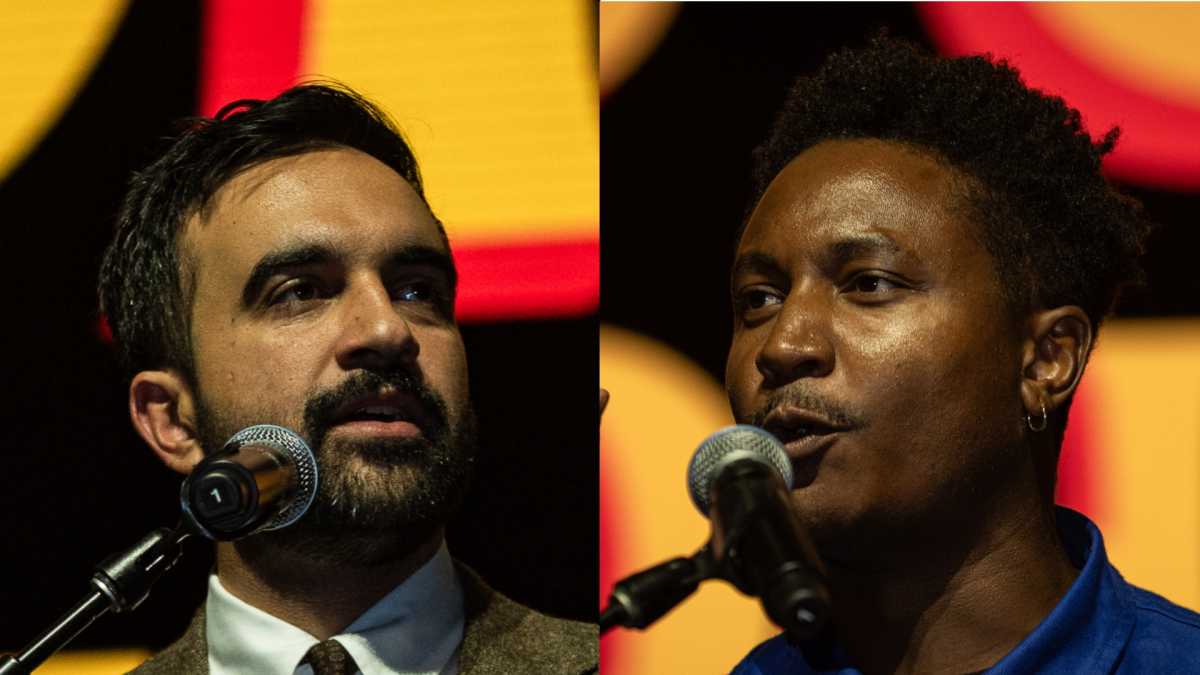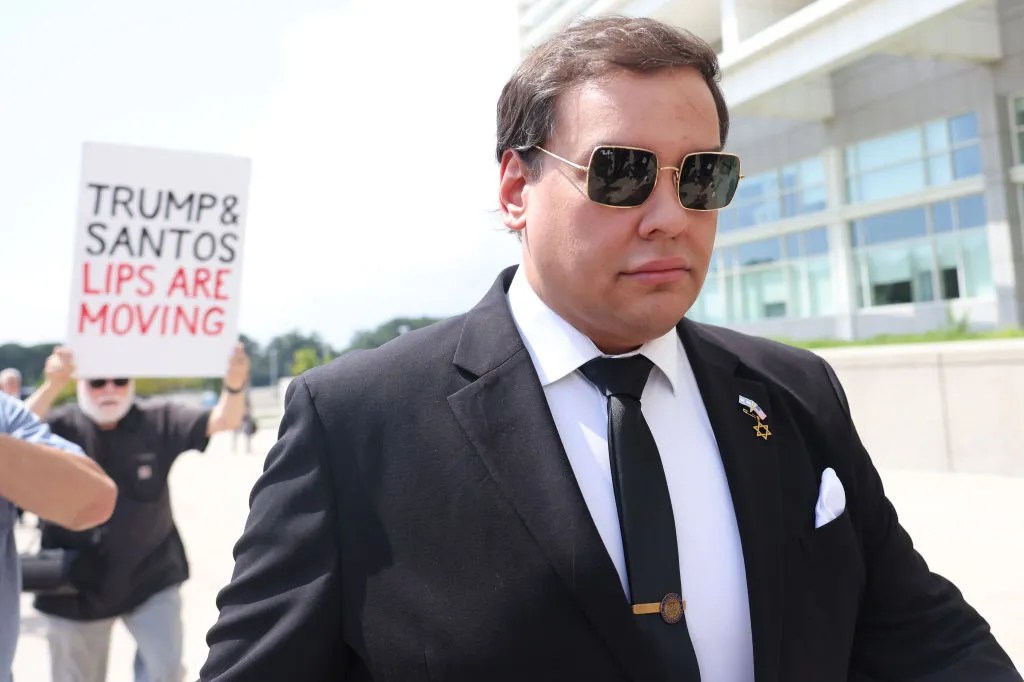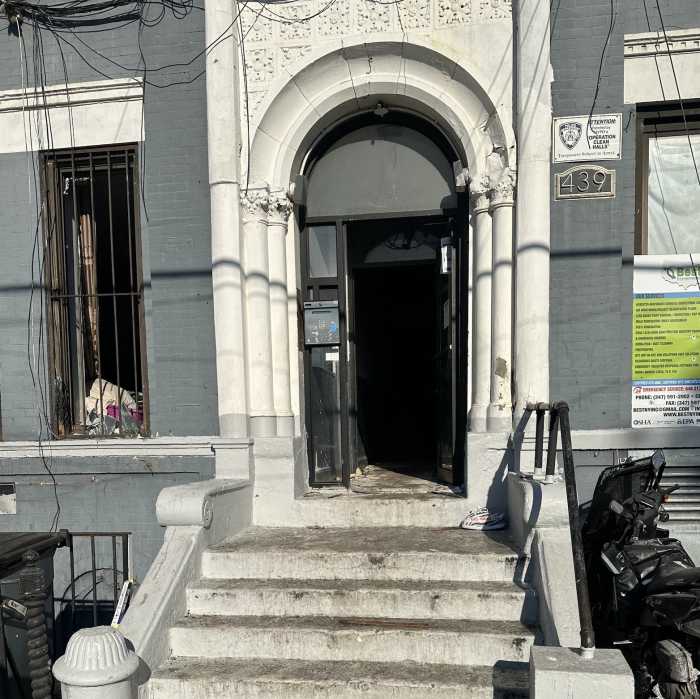Gay director Ira Sachs’ “Peter Hujar’s Day” lands closer to a theatrical monologue than the feature-length film it is. Made with just two actors on one set, it re-stages a day in 1974, during which photographer Peter Hujar (out actor Ben Whishaw) spoke about his previous day in minute detail to writer Linda Rosenkrantz (Rebecca Hall). It resembles several projects of the period, not least Andy Warhol’s “a: a novel.” Just as Warhol’s films pushed aside standard definitions of the medium, dedicating 32 minutes to a man eating a mushroom or even eight hours to a shot of the Empire State Building, “a: a novel” book was assembled from exact transcriptions of tape recordings of Factory “superstar” Ondine speaking. Rosenkrantz planned a similar endeavor, compiled from artists’ recollections of one day in their lives.
Hujar steps into an elevator, heading up to Rosenkrantz’s apartment. With her tape recorder out, the two spend an extended period going over his experiences the day before. His big event is a “New York Times” photo shoot with Allen Ginsberg, Ginsberg’s partner Peter Orlovsky, and a woman. He’s friendly with figures like Susan Sontag and Fran Lebowitz, but at this point, he hadn’t established himself as an artist. He smokes compulsively, as Rosenkranz proves an eager listener. The two take a break by dancing to a record. As nightfall arrives and deepens, Hujar is still talking well after Rosenkranz breaks out the candles.
“Peter Hujar’s Day” tries to reduce its degree of artifice down to a minimum — within limits, of course. (Both actors are Brits putting on New York accents.) It acknowledges its existence as fiction in a few scenes, letting the crew into the frame. Shot on 16mm, it uses long takes from a camera that remains still. A few times, the reel just ends, and the film therefore leaps ahead in Hujar and Rosenkrantz’s conversation. With the limited space where the film was shot, Sachs uses a variety of camera angles and even poses the actors on a roof and stoop. The 16mm cinematography creates a rough texture, accentuating grain. Even at night, Rosenkrantz barely turns the lights on.
“Peter Hujar’s Day” is so crammed with references to arts figures of the ‘60s and ‘70s that younger spectators might need footnotes. It certainly looks back fondly on that period. Compared to films with similar concepts, like Shirley Clarke’s “Portrait of Jason” or Warhol’s “Chelsea Girls,” its essential kindness is noteworthy. Hujar is gossipy, name-dropping famous people he knows, but he’s not mean.
During interviews for his previous film, “Passages,” Sachs pointed to queer cinema of the ‘70s as a greater inspiration than present-day film. While remaining glued to a single day, “Peter Hujar’s Day” nods towards an arts scene that would emerge later in the ‘70s, only to be destroyed by AIDS. (Hujar himself succumbed to it in 1987.) Hujar was a mentor to gay artist David Wojnarowicz, and he also worked with another gay photographer, Robert Mapplethrope. He also had a relationship with activist Jim Fouratt. Without speaking directly about politics, “Peter Hujar’s Day” reflects the benefits of post-Stonewall liberation. Hujar never makes a fuss about his gayness or anyone else’s, but one picks up on how many queer writers and artists he knew.
The fragmentary nature of “Peter Hujar’s Diary” means that it includes some filler, even in its brief runtime. Its biggest issue is that it never establishes Rosenkrantz as an artist on her own. While she offers more of her own opinions (such as that Hujar smokes too much) later on, she seems present only to lend him a platform. This could be staged as a one-man show, with Hujar speaking by himself to a tape recorder, without losing much by cutting her out.
With minimal means, “Peter Hujar’s Diary” constructs a character. One gets a real sense of the artist’s personality by the end. It’s also a picture of his time in less obvious ways. Its slow pace is a reproach to the careerism of current New York life. Hujar’s work doesn’t occupy his whole frame of reference. Rosenkranz says that she can while away a whole day without even realizing it. However, poverty is a real part of Hujar’s life. He eats little and struggles to get paid for his work. (When he listens to Allen Ginsberg criticize the “New York Times” owners, he doesn’t feel any complicity because his photos of the poet are his first work for the paper.) His compulsive smoking tames his appetite because he can barely afford food.
All the same, there’s a freedom in this existence. Today, someone in Hujar’s position would be unlikely to have the time to spend an entire day talking with another person. Even in just 73 minutes, watching the film also feels like spending a day in his presence.
“Peter Hujar’s Day” | Directed by Ira Sachs | Janus Films | Film Forum and Film at Lincoln Center

